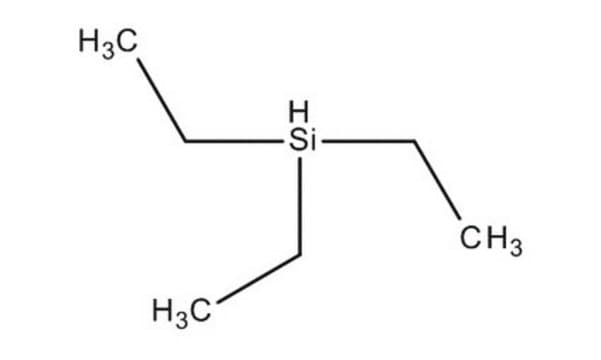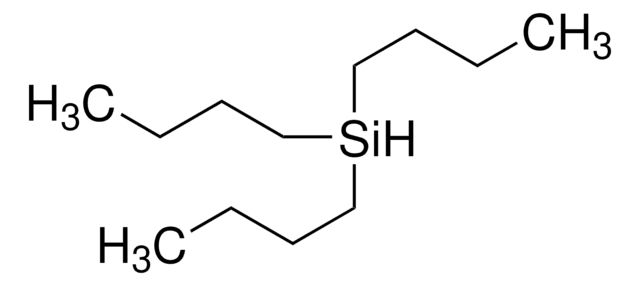230197
Triethylsilane
99%
Synonyme(s) :
NSC 93579, Triethylhydrosilane, Triethylsilicon hydride
About This Item
Produits recommandés
Niveau de qualité
Pureté
99%
Forme
liquid
Pertinence de la réaction
reagent type: reductant
Indice de réfraction
n20/D 1.412 (lit.)
Point d'ébullition
107-108 °C (lit.)
Densité
0.728 g/mL at 25 °C (lit.)
Chaîne SMILES
CC[SiH](CC)CC
InChI
1S/C6H16Si/c1-4-7(5-2)6-3/h7H,4-6H2,1-3H3
Clé InChI
AQRLNPVMDITEJU-UHFFFAOYSA-N
Vous recherchez des produits similaires ? Visite Guide de comparaison des produits
Catégories apparentées
Application
- Synthesis of a spiro-oxindole blocker of Nav1.7 for the treatment of pain
- Redox initiated cationic polymerization
- Beckmann rearrangement of cyclododecanone oxime
- Regioselective reductive coupling of enones and allenes
Catalyst reactivation after catalyst polymerization of styrene
Studies involving the prediction of organosilicon flash points
Produit(s) apparenté(s)
Mention d'avertissement
Danger
Mentions de danger
Conseils de prudence
Classification des risques
Eye Irrit. 2 - Flam. Liq. 2 - Skin Irrit. 2 - STOT SE 3
Organes cibles
Respiratory system
Code de la classe de stockage
3 - Flammable liquids
Classe de danger pour l'eau (WGK)
WGK 2
Point d'éclair (°F)
21.2 °F
Point d'éclair (°C)
-6 °C
Équipement de protection individuelle
Eyeshields, Faceshields, Gloves, type ABEK (EN14387) respirator filter
Certificats d'analyse (COA)
Recherchez un Certificats d'analyse (COA) en saisissant le numéro de lot du produit. Les numéros de lot figurent sur l'étiquette du produit après les mots "Lot" ou "Batch".
Déjà en possession de ce produit ?
Retrouvez la documentation relative aux produits que vous avez récemment achetés dans la Bibliothèque de documents.
Les clients ont également consulté
Notre équipe de scientifiques dispose d'une expérience dans tous les secteurs de la recherche, notamment en sciences de la vie, science des matériaux, synthèse chimique, chromatographie, analyse et dans de nombreux autres domaines..
Contacter notre Service technique














